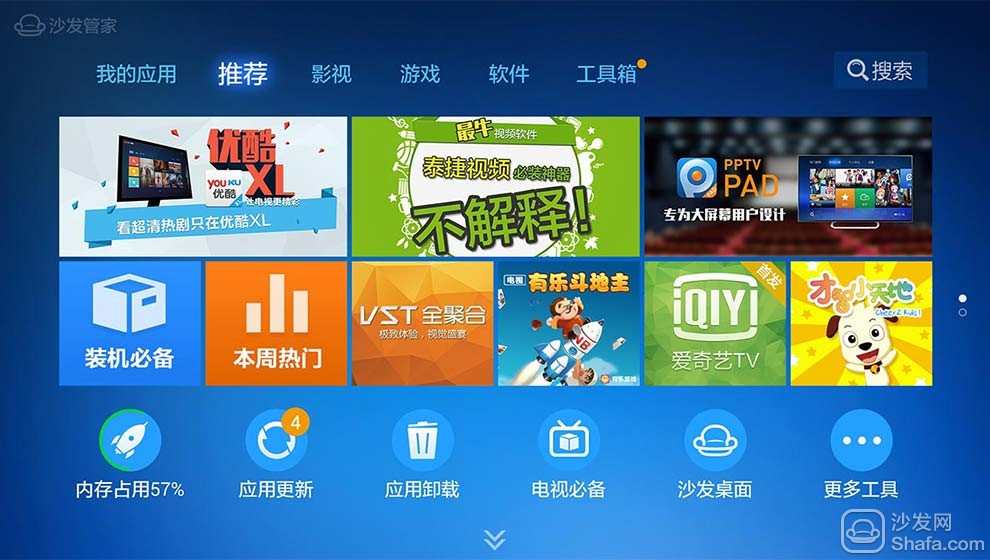
4K is a standard for video resolution. In general, the screen resolution of TV broadcasts reaches 3840×2160, which is 3,840 horizontal pixels, and 2160 pixels in vertical direction are ultra-high definition (4K). We often say that full-HD 1080P video has a resolution of 1920×1080, which is only a quarter of 4K ultra clear. It can be said that 4K means that the video has more outstanding clarity and can display more abundant details. This is more obvious in video with high quality requirements such as sports events and movies.
China’s television has continued to make breakthroughs and improvements in the quality and definition of the full-HD 1080P, which is the mainstream standard definition, and the HD 720P. CCTV launched high-definition channels in 2006 and expanded to 9 channels in 2009 (including CCTV 1, Beijing Satellite TV, and Dragon TV). It was only in recent years that some provincial TV stations started broadcasting high-frequency content. It can be said that they have just secured their position. . From the perspective of the overall development trend, 4K ultra-clearing should take some time in China. From the specific promotion aspect, there are also many barriers to 4K live broadcasting. Let us specifically look at what is the most important constraint factor.
4K TV growth significantly increased demand for resources
From the perspective of the terminal, on the one hand, the popularity of TVs supporting 4K resolution will be low, which will result in serious blocking of 4K live broadcasting; on the other hand, when 4K TV becomes mainstream, users will have great influence on 4K live streaming and related resources. Demand. In the past year alone, the overall trend is undoubtedly toward the rapid development of the latter. In 2014, global 4K TV shipments increased by 700%, of which the Chinese market accounted for 70% of the global 4K TV market demand. The proportion of UTV’s attention in China also reached 24.6%, an increase of 19.6% from 2013.
Judging from the price of China's TV market, the price of 4K TV has been completely personalized. The price of domestically produced 55-inch large-screen 4K TVs is generally 4,000 to 5,000 yuan, and 7 thousand or so can buy some popular models of foreign brands. Smaller 4K TVs are even cheaper and more than 3,000 yuan can buy a good one. The price of pro-people has made it very easy for 4K TV to be implemented. And nowadays many users will name 4K when they choose TVs, which shows that the popularity of 4K TVs is high.
From the perspective of market trends, price, and degree of concern, the popularity of 4K TVs will not be a problem for 4K live broadcasts, but will be promoted by soaring demand.
There are still difficulties in high-tech live broadcasting and production costs
Although the rapid development of the user terminal has a catalytic effect, the high cost of the 4K live broadcasting in recording and production has kept it tightly. Just like the high-definition television of China, the implementation of 4K live broadcasting needs to replace a complete set of recording, acquisition, production, and transcoding equipment. Compared with high-definition, 4K equipment costs more.
As for recording and acquisition, it's safe to say that there is already a complete set of equipment, but the price is much higher than that of Full HD. The subsequent production and transcoding need to face four times the amount of information in full HD, but also a series of operations such as editing, rendering, color grading, lyrics, and transcoding that are more accurate, and guarantee the content without delay. Make output. In addition, in the final transmission link, although there are currently solutions, the technology and equipment are not yet stable in terms of stability, and the cost is also enormous.
Transmission problems are particularly feasible for dedicated channels
While 4K TV brings us the ultimate in clarity, we have a huge burden on our storage and transmission. In the 2014 World Cup in Brazil, when the BBC made 4K live video at 60 frames per second, it required 36Mbps of bandwidth, which is what we often call 36M broadband. This means that more than 4MB of data per second can be overwhelming either for storage or for the network.
Of course, the emergence of the H.265 encoding method has alleviated the seriousness of the problem to some extent. With the latest H.265 encoding optimization, half the file size can be reduced, which means that the occupied network bandwidth is also halved. Netflix Video claims that the encoded 4K video only occupies 15.6 Mbps. However, this is the result of non-transcoding in time. There are still technical difficulties in transcoding the live broadcast system.
Although the bandwidth to be occupied is relatively large, the current technology cannot reach it. However, as far as the domestic situation is concerned, it is not wise to use existing home networks, and opening up new dedicated channels is the best way. At present, there are two solutions. One is to use the original cable line for transmission. Through "CM (Cable Modem also known as cable modem), not only the user coverage is high, but also the support of the bandwidth is very high, can be easily 800Mbps is achieved. Some cable TV companies, such as Gehua Online, have already begun to operate cable television networks. A maximum of 22 Mbps services can be handled directly.
Another way is to open up separate lines for television signals, typically using fiber optics. The convergence of the three networks, which belong to the wide grid, telecommunications network and the Internet, belongs to the category of IPTV network television. Although fiber-optic networks are well-suited for 4K video transmissions, they require a separate network and user acceptance is relatively low.
to sum up:
In fact, the 4K live broadcast in China is not a big problem with the popularity of terminal 4K TVs and transmission bandwidth. It is not very hard to solve them. The cost and technical problems in production and transcoding are the bottleneck that limits the popularity of 4K live broadcasting. And the user's demand for 4K live broadcasts only comes from equipment upgrades. The picture quality of high bit rate 1080P is already very clear, and it can meet the needs of most users. Moving forward between high costs and non-rigid demand, I believe there is still a long way to go for the 4K live broadcast.
Recommended installation sofa butler, download address: http://app.shafa.com/

Hot Apps Recommended: HDP VST All-in-one Fast-viewing film Dragons Live Karaoke King TV Thumb Playing ZAKER